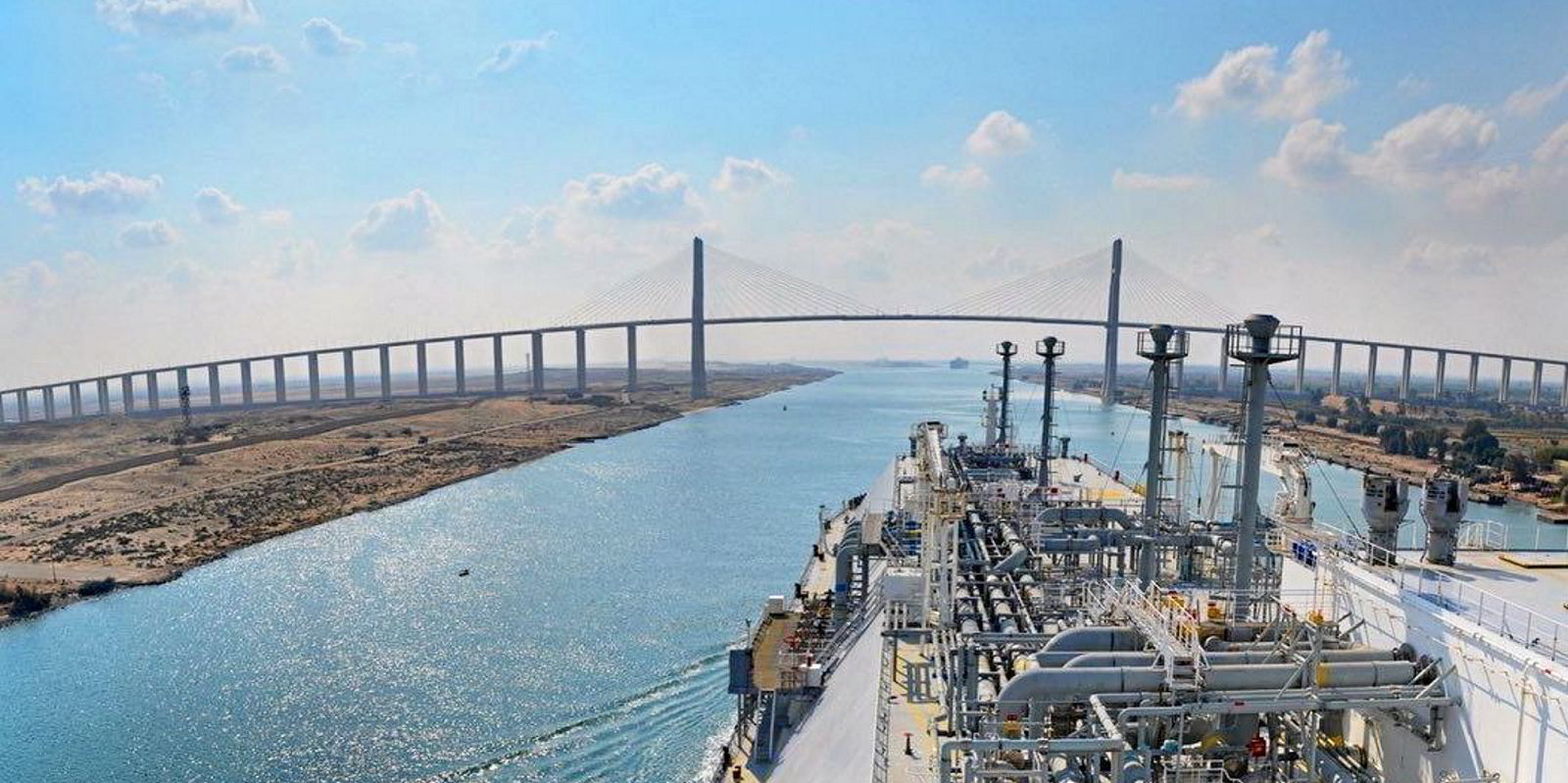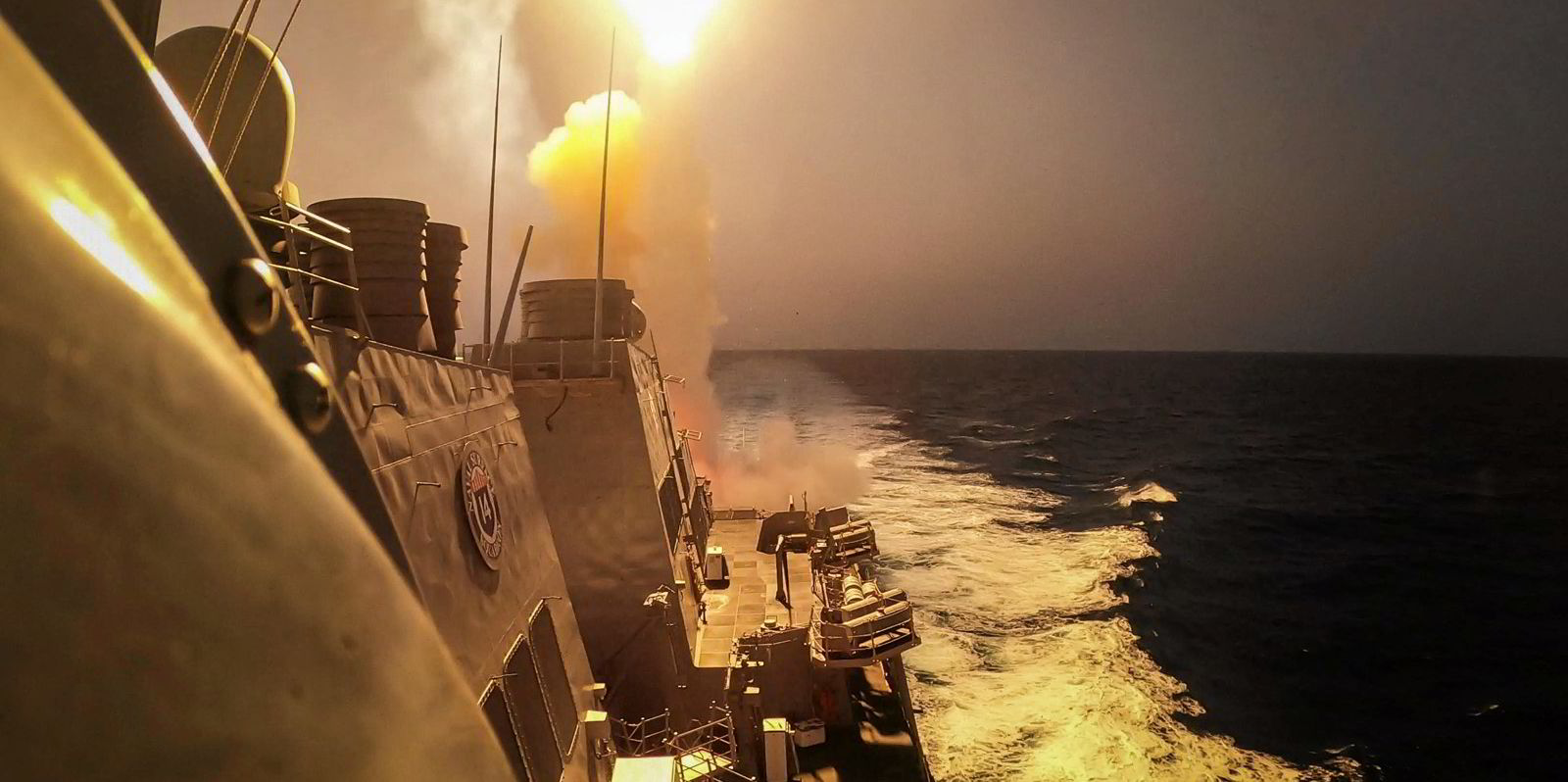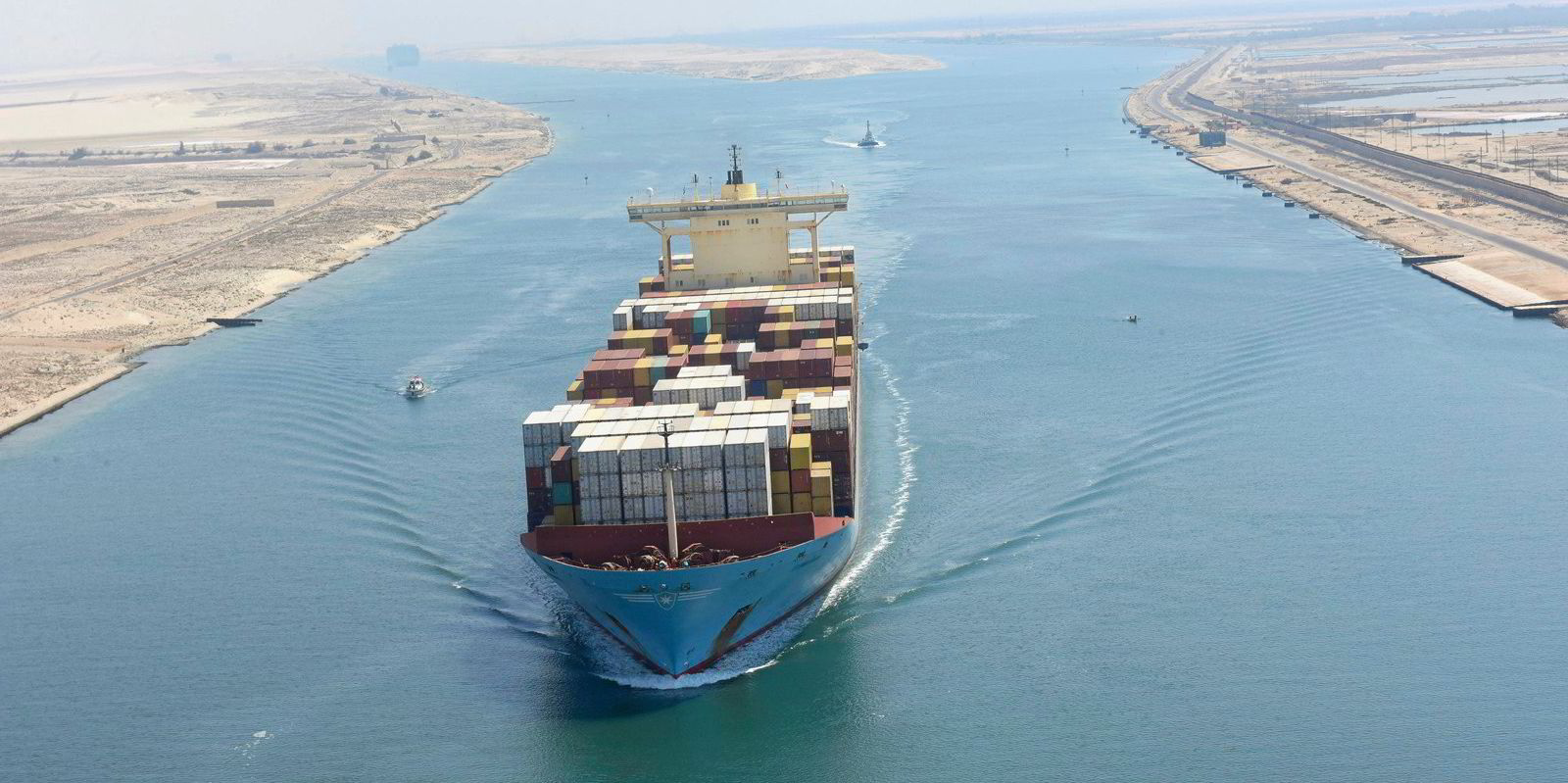Nine LNG carriers were logged as taking the Suez Canal route to Asia in December — half the number recorded a month earlier, analyst RBN Energy says.
Houthi militants in Yemen have attacked more than 20 ships in the Red Sea since November, prompting many owners and operators to divert from the region.
In its LNG Voyager monthly figures, the energy analyst said most of the LNG ships heading south through the canal were in the first half of December.
By contrast, at least 16 LNG carriers took the longer Cape of Good Hope route to Asia — “an all-time high” for this route.
Last month, shipbroker Affinity LNG forecast an 18% drop-off in LNG carrier transits through the Suez Canal in December following a rise in attacks on merchant shipping in the Red Sea area.
Sources following Suez transits told TradeWinds this week that LNG carriers are continuing to pass through the waterway and said the decision to take that route appears largely down to the policies of each shipowning and operating company, along with different flag states.
LNG carrier trades have proved lacklustre over the past few weeks and kicked off the New Year with rate falls in the west.
But forecasts of cold weather for northern Europe and the disruption to shipping in the Red Sea could reverse these, brokers said, as charterers seek extra cover for longer-haul voyages.
Enquiries for LNG carriers in the east are also said to be picking up as cold weather in northern Asia continues.
As the sector grapples with January’s requirements, figures are emerging for how the LNG market unfolded in 2023.
According to Bloomberg, China topped the list of LNG buying countries, importing almost 71m tonnes, a rebound on 2022 but still below 2021’s levels.
Rystad Energy is forecasting that China will increase its imports to 84m tonnes next year and 136m tonnes by 2030.
But the European Union topped Chinese buying last year with a record 99m tonnes, up 5% on 2022. Import capacity was boosted by the addition of several floating storage and regasification unit-based terminals.
Some 44% of the EU’s imports came from the US, which was the largest LNG producer in 2023, exporting 91.2m tonnes and knocking Qatar off top spot.
The EU’s second-largest supplier last year was Russia (15%) amid calls for these imports to be phased out in the wake of the invasion of Ukraine in 2022.





